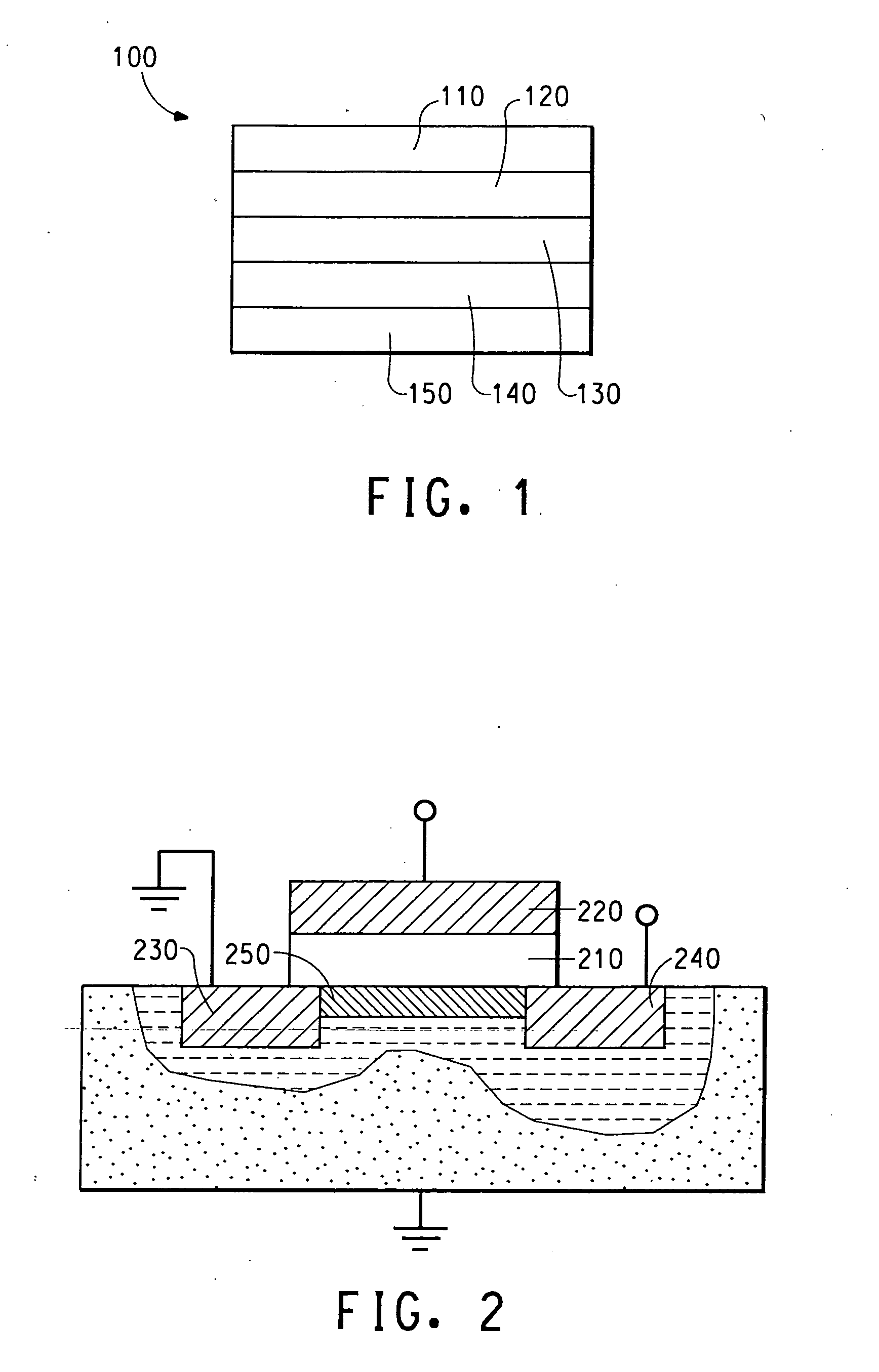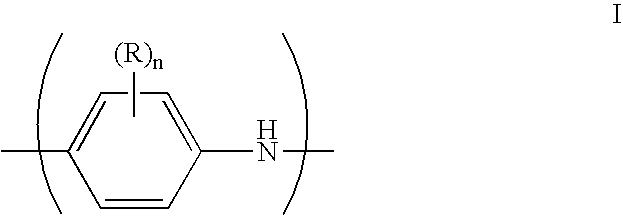Electrically conducting organic polymer/nanoparticle composites and methods for use thereof
- Summary
- Abstract
- Description
- Claims
- Application Information
AI Technical Summary
Benefits of technology
Problems solved by technology
Method used
Image
Examples
invention example 1
This example illustrates preparation of an aqueous PAni / PAAMPSA dispersion with silica nanoparticles and its electrical conductivity and light emission properties as a buffer layer.
PAni / PAAMPSA (0.63 g) prepared as in Comparative Example 1 was combined with 0.75 g Snowtex-UP® (0.75 g, Nissan Chemical Industries, Ltd. Tokyo, Japan), which contains 0.152 g silica nanoparticles, and 24.07 g deionized water. Snowtex-UP® is an aqueous dispersion having a pH from 9.0 to 10.5, and having a silica particle size of about 5-20 nm in width and about 40-300 nm in length. The silica:PAni / PMMPSA weight ratio is 4.1:1.
The dispersion was tested for electrical conductivity and light emission properties in the same manner as described in Comparative Example 1. As shown in the results summarized in Table 1, a buffer layer cast from the dispersion of Invention Example 1 has a lower conductivity (8.2×10−7 S / cm vs. 3.6×10−5 S / cm) and higher half-life (29 hours vs. 12 hours) when compared with Compar...
invention example 2
This example illustrates preparation of an invention aqueous PAni / PAAMPSA dispersion with colloidal silica and its electrical conductivity and light emission properties as a buffer layer.
PAni / PMMPSA (0.61 g) as prepared in Comparative Example 1 was combined with Snowtex-O® (0.75 g, from Nissan Chemical Industries, Ltd. Tokyo, Japan), which contains 0.153 g silica nanoparticles, and 23.47 g deionized water. Snowtex-O® is an aqueous dispersion having a pH range of 2-4 and having a silica particle size of 10-20 nm. The silica:PAni / PAAMPSA weight ratio is 3.99:1.
The dispersion was tested for electrical conductivity and light emission properties in the same manner as described in Comparative Example 1. As shown in the results summarized in Table 1, a buffer layer cast from the dispersion of Invention Example 2 has a lower conductivity (7.6×10−7 S / cm vs. 3.6×10−5 S / cm) and higher half-life (30 hours vs. 12 hours) when compared with Comparative Example 1. This example again demonstrat...
invention example 3
This example illustrates preparation of an invention aqueous PAni / PAAMPSA dispersion with electrically semi-conductive oxide and its electrical conductivity and light emission properties as a buffer layer.
PAni / PAAMPSA (0.90 g) as prepared in Comparative Example 1 was combined with Celnax CX-Z300H® (1.97 g, a zinc antimonite from Nissan Chemical Industries, Ltd. Tokyo, Japan), which contains 0.601 g conductive oxide particles, and 48.53 g deionized water. The Celnax CX-Z300H® is an aqueous dispersion having a pH of 6.85, and having 20 nm oxide nanoparticles. Conductivity of the oxide powder is 3.6 S / cm measured on a compressed dried pellet at a pressure of 160 Kg / cm2. The oxides:PAni / PAAMPSA weight ratio is 1.50:1.
The dispersion was tested for electrical conductivity and light emission properties in the same manner as described in Comparative Example 1. As shown in the results summarized in Table 1, a buffer layer cast from the dispersion of Invention Example 3 has a lower condu...
PUM
| Property | Measurement | Unit |
|---|---|---|
| Electrical conductivity | aaaaa | aaaaa |
| Electrical conductivity | aaaaa | aaaaa |
| Particle size | aaaaa | aaaaa |
Abstract
Description
Claims
Application Information
 Login to View More
Login to View More - R&D
- Intellectual Property
- Life Sciences
- Materials
- Tech Scout
- Unparalleled Data Quality
- Higher Quality Content
- 60% Fewer Hallucinations
Browse by: Latest US Patents, China's latest patents, Technical Efficacy Thesaurus, Application Domain, Technology Topic, Popular Technical Reports.
© 2025 PatSnap. All rights reserved.Legal|Privacy policy|Modern Slavery Act Transparency Statement|Sitemap|About US| Contact US: help@patsnap.com



